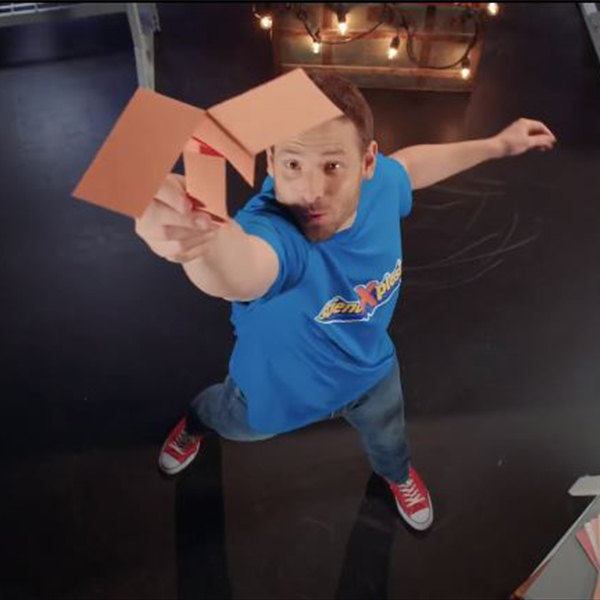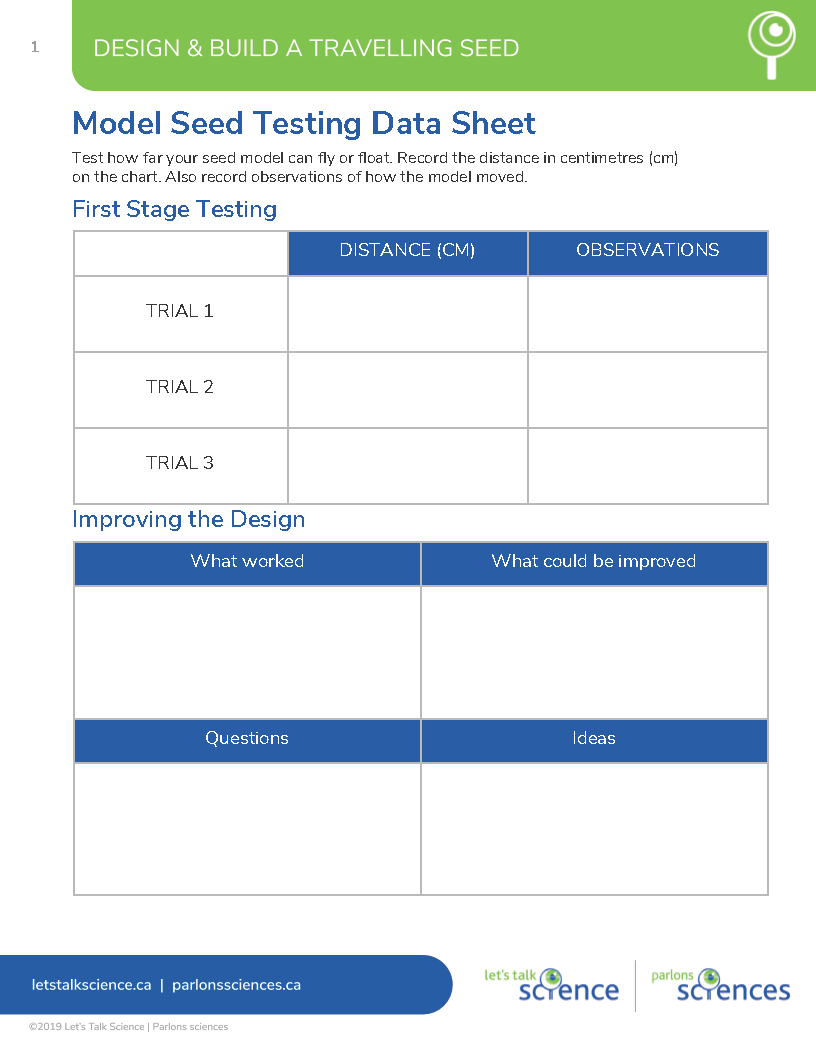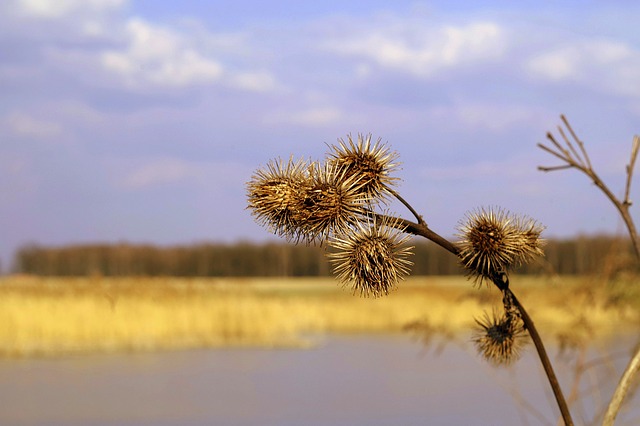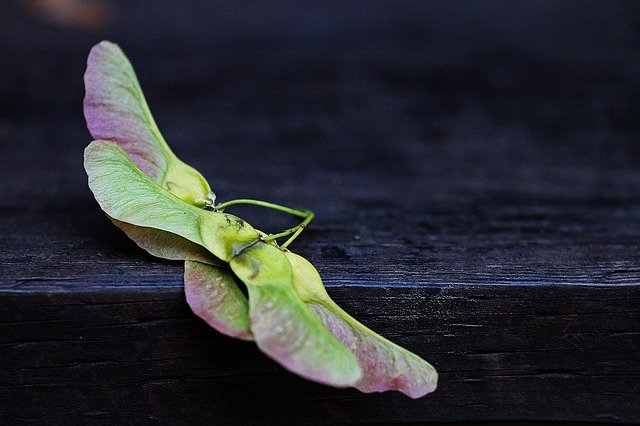ScienceXplosion - Spinning Seeds

Eric experimenting with his own “helicopter seed”!
On this episode of ScienceXplosion, Eric discovers how his maple tree spreads its seeds. It's not magic, it's science!
BACK TO THE SCIENCEXPLOSION HOME PAGE
Now it's your turn! Create your own flying seeds!
Did you know?
Flowering plants that create seeds only appeared about a hundred million years ago. That means, many dinosaurs couldn’t stop and smell the flowers!
The purpose of seeds is to bring the offspring of plants to new places where they can have space to grow. Many types of plants have seeds that use the wind to travel away from their parent plants. These seeds are often able to travel large distances.
Can you design and build a model seed that uses air to travel as far as possible?

WHAT DO YOU NEED?
- New or recycled craft materials: such as construction paper, craft foam, tissue paper Styrofoam, aluminum foil, string, yarn, fabric, ribbon, pipe cleaners, craft sticks, buttons, etc.
- Construction tools: such as scissors, rulers, tape, glue, etc.
- Measuring tools: such as a measuring tape
- Table fan
- Place to record your observations: such as the Model Seed Testing Data Sheet [.pdf] or you can draw something similar on a sheet of paper or in a notebook
- Writing tools: such as a pencil and eraser
- Optional: a camera to take pictures or videos or your creations!
WHAT DO YOU DO?
Your challenge is to create a model plant seed that can travel as far away as possible when placed in front of your fan.
- Start by sketching any idea that comes to mind. Think about plant seeds you’ve already seen or use your imagination to come up with a silly seed. Draw your ideas.
- Once you have run out of ideas, think about which one might go the furthest.
- Pick your favorite design and build it using your craft materials.
- Once your model is ready, set up a place to test your model. You will need to put the fan on the table and have a place where the model can fly safely. Make sure that the cord for the fan cannot trip someone. Make sure you have your recording sheet and writing material at hand.
- It’s time to test your seed model! Put the fan on the slowest speed setting. Hold your seed model in front of the fan and then let it go.
- Don’t pick it up yet! Once it has landed, you can measure the distance it traveled and record this on your testing sheet.

- Repeat the experiment with your design at least two more times. Record the distance for each attempt. How far did the model go each time?
Did you know?
Scientists often repeat the same experiment many times. This is to make sure that what they saw was not a fluke but what would happen normally.
WHAT'S NEXT?
- You can try changing your design to make it travel even further.
- Try testing one of the other designs you came up with. How does it compare to your first design?
- You can do the same experiment outside, using real air movement - the wind!
- Try dropping your seed from up high, such as from the top of a slide or second floor window.
- Do maple trees grow near you? Find out!
WHAT’S THE POINT?
Studying how seeds travel is an interesting way to help us understand the way different plants live.
Studying living things can sometimes provide an inspiration to people who design things for people. For example, people studied birds for a long time to help them create flying machines.

Did you know?
The hooks on burdock seeds were an inspiration to the person who invented Velcro®!
WHAT ELSE?
Read on:
With over 20 years experience, GAPC Entertainment’s team creates stories with power, creativity and reach. GAPC Entertainment is a vibrant Canadian production company with a passion for creating quality programming for national and international audiences on all platforms.
GAPC Entertainment produces creative, diverse, and compelling content across most genres, including performing arts, biopics, science, history, drama, and award-winning children’s educational programs.

